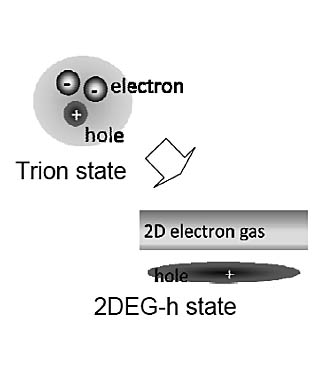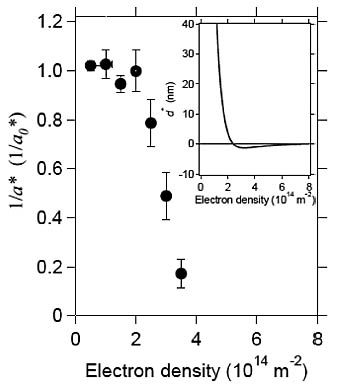Physical Science Laboratory, *University of Tsukuba
A trion, the bound state of two electrons and a hole,
cross over to the unbound state of the two-dimensional electron gas plus
a hole state (2DEG-h) as the excess electron density is increased (see
Fig. 1). This is because the Coulomb attraction between the electron and
hole is screened by the degenerate 2D electron gas. In studying this crossover,
a difficulty lies in the unavoidable spatial disorder of the electrostatic
potential existing in samples. In the low- electron-density regime, the
electrons are localized at the potential valleys. The electron-density
regime where the crossover occurs often overlaps the electron-density regime
where the electron localized-delocalized transition occurs.
In this work, we studied the crossover by analyzing the
evolution of the PL spectrum using an undoped GaAs QW [1]. Unlike in modulation-doped
QWs, which are commonly used for studying 2D electron system, the electron
localization occurs at much lower density than the crossover regime since
the typical length scale of the disorder potential for our sample is long.
Therefore, the electron localization and the crossover are clearly separated
in our sample. By measuring the photoluminescence linewidth under perpendicular
electric fields, we have traced the variation of the effective radius a* of the trion as a function of electron density (Fig. 2). The a* increases sharply above ns = 2 × 1014 m-2, at which the screening length drops. Here, the screening length is predicted
by nonlinear-screening theory. This is a clear evidence of the trion-2DEG-hole
crossover related to the dissociation of the trion state screened by the
2D electron gas.
This work was supported by KAKENHI.
[1] M. Yamaguchi et al., Phys, Rev. B 87 (2013) 081310(R).
 |
 |
|||||
|
|